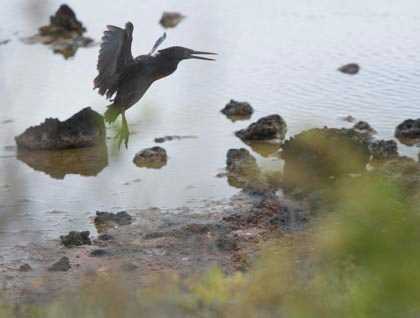Santa Cruz Island is the second largest in this oceanic archipelago, which is why it has many visitor sites along its coastal area and its interior. Yesterday we spent the whole day on the south face of Santa Cruz Island, where the Charles Darwin Station is located, and after a couple of hours navigation overnight, this morning we woke in the north face of Santa Cruz Island.
Our first guest’s impression was that they were on a different island, because of its dryness comparing with yesterday morning’s experience. This is very typical in big islands because the prevailing winds come from the southeast, and brings moisture to these slopes. But on the other side the north face receives almost no rain for most of the year, except in the rainy season.
Probably that is the main reason why the first settlers here preferred the south slopes for colonization, because in the old days collecting water was the only way to survive. And of course, farming conditions are much better on the south slopes than the northern ones.
This morning we were exploring typical Galapagos dry vegetation, which has a ghostly appearance from the distance. But as we start exploring more and more of its interior, the first Galapagos dragons start appearing everywhere. It was very remarkable to observe how these endemic land iguanas can survive under these conditions, but soon we realized that male iguanas are extremely territorial. And that was the reason we didn’t see two males together. We also noticed that they protect a big area where giant prickly pear cacti, which are the main food source, thrive. Females are free to wander as they wish inside anyone’s male’s territory. This will give them a chance to mate and pass their genetic material to the next generation. This is what we call natural selection in action.
For the afternoon we had a zigzag navigation around the north side of Santa Cruz Island, looking for marine creatures in the ocean. It was magical and peaceful to see many different species of sea birds such as boobies, frigates, shear waters, petrels, phalaropes, sea lions, and from time to time jumping mobula rays, which are a smaller version of manta rays.
We finished our day circumnavigating Daphne Major, which is a small islet off the coast of Santa Cruz Island. This half a mile volcano is very important for Peter and Rosemary Grant, because they are a couple of scientist who are carrying on research in the field for over 30 years already. After their very meticulous work they concluded that evolution happens in a basic day-to-day process.
I highly recommend reading the book “The Beak Of The Finch.” This experience will make you see Galapagos with deferent eyes.







